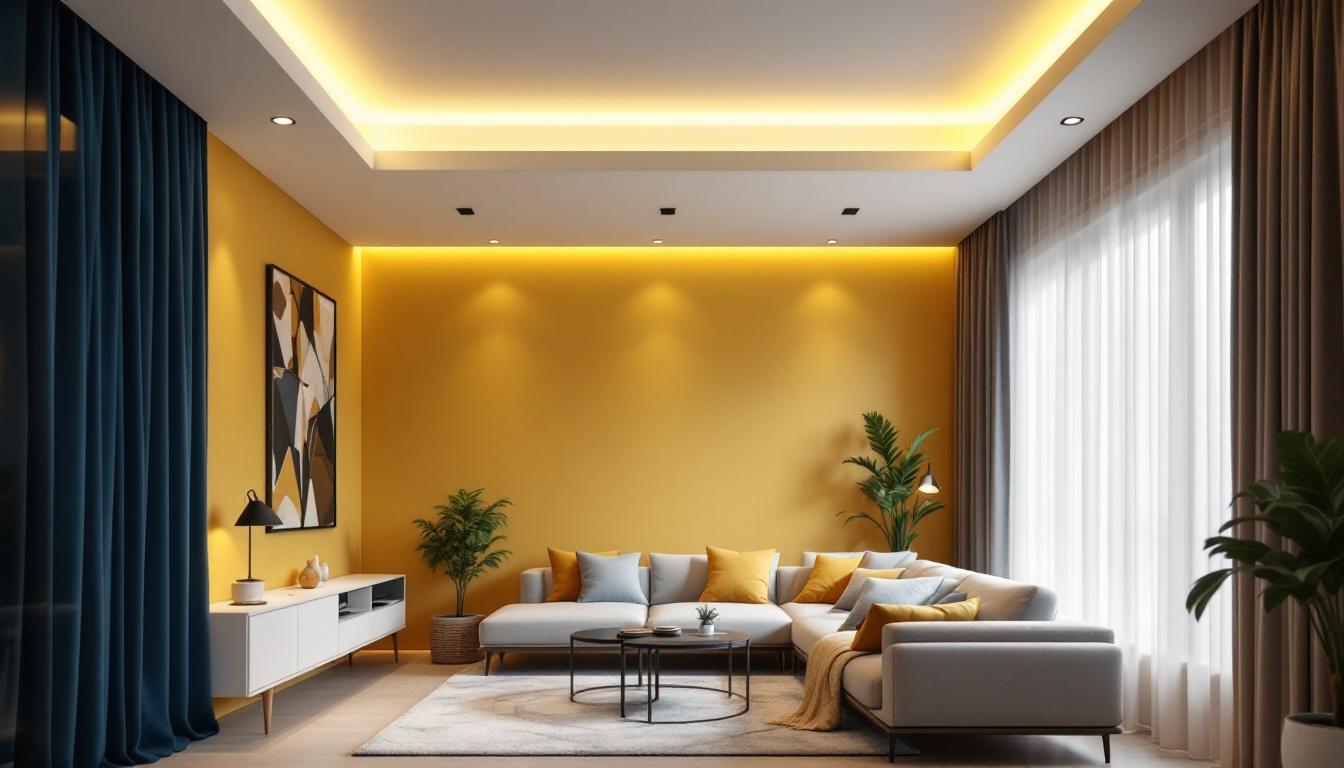
In the ever-evolving world of lighting design and installation, staying ahead of the curve is essential for lighting contractors. With advancements in technology and a growing emphasis on energy efficiency, understanding best practices in advanced lighting can significantly enhance project outcomes. This article delves into key strategies and methodologies that lighting contractors should adopt to ensure optimal results for their clients.
The landscape of lighting technology has transformed dramatically, with innovations that not only improve illumination but also enhance energy efficiency and sustainability. Familiarity with these technologies is crucial for any lighting contractor looking to provide the best solutions for their clients.
Light Emitting Diodes (LEDs) have become the standard in modern lighting solutions due to their energy efficiency, longevity, and versatility. Unlike traditional incandescent bulbs, LEDs consume significantly less power and have a lifespan that can exceed 25,000 hours. This not only reduces replacement costs but also minimizes waste, making them an environmentally friendly option.
Moreover, LEDs can be easily integrated with smart technology, allowing for features such as dimming, color changing, and remote control. Contractors should be well-versed in the various types of LED fixtures available and their appropriate applications, from residential to commercial and industrial settings. The ability to customize lighting environments with LEDs also opens up opportunities for creative design, enabling contractors to craft unique atmospheres that enhance the functionality and aesthetic of any space.
smart lighting systems are revolutionizing how spaces are illuminated. These systems utilize sensors and connectivity to adjust lighting based on occupancy, time of day, or even natural light availability. For contractors, understanding the integration of smart lighting with building management systems can provide clients with enhanced control and energy savings.
Additionally, educating clients about the benefits of smart lighting, such as increased comfort and security, can help in upselling these advanced solutions. Contractors should stay updated on the latest smart lighting technologies and be prepared to offer tailored solutions that meet specific client needs. The integration of voice-activated systems and mobile applications further enhances user experience, allowing clients to control their lighting environments effortlessly, which can be a significant selling point for modern installations.
Daylight harvesting is an innovative approach that maximizes the use of natural light in a space, reducing reliance on artificial lighting. This practice not only enhances the aesthetic appeal of a space but also contributes to energy savings. Contractors should consider incorporating daylight sensors and automated shading systems into their designs to optimize natural light usage.
When implementing daylight harvesting, it is essential to conduct a thorough analysis of the space to determine the best placement for windows, skylights, and light shelves. This proactive approach can lead to significant energy reductions and a more sustainable lighting design. Furthermore, incorporating daylight harvesting can improve occupant well-being by providing a connection to the outside environment, which has been shown to enhance productivity and mood. As awareness of mental health and well-being in workspaces grows, the demand for designs that prioritize natural light will likely increase, making it a valuable area of expertise for contractors.
Effective lighting design goes beyond mere aesthetics; it requires a strategic approach to ensure functionality, efficiency, and comfort. For lighting contractors, mastering the principles of lighting design is vital for delivering exceptional results.
Creating an effective lighting layout involves understanding the purpose of the space and the activities that will take place within it. Different areas require varying lighting levels and distributions. For instance, task-oriented spaces such as kitchens or offices may need brighter, focused lighting, while relaxation areas like living rooms benefit from softer, ambient lighting.
Contractors should utilize tools such as lighting simulation software to visualize how light will interact within a space. This technology can help in making informed decisions about fixture placement, types of fixtures, and light levels, ensuring that the final result meets client expectations.
Color temperature plays a crucial role in the perception of a space. Measured in Kelvin (K), color temperature can influence mood and functionality. For example, warmer tones (2700K-3000K) are often preferred in residential settings for their cozy ambiance, while cooler tones (4000K-5000K) are suitable for workspaces that require focus and clarity.
Additionally, the Color Rendering Index (CRI) measures how accurately a light source displays colors. A higher CRI (above 90) is essential in settings where color accuracy is critical, such as art galleries or retail spaces. Contractors must educate clients on the importance of selecting the right color temperature and CRI to enhance the overall experience of the space.
With the increasing focus on sustainability, understanding energy efficiency standards is imperative for lighting contractors. Familiarity with regulations such as the Energy Policy Act and local building codes will ensure compliance and can also serve as a selling point for clients interested in reducing their carbon footprint.
Contractors should be proactive in recommending energy-efficient solutions, such as LED fixtures and smart lighting controls, that not only meet but exceed these standards. This commitment to sustainability can enhance a contractor’s reputation and attract environmentally conscious clients.
Proper installation is critical to the performance and longevity of lighting systems. Adhering to best practices during installation can prevent issues down the line and ensure that clients receive the full benefits of advanced lighting technologies.
Ensuring that wiring and circuitry are installed correctly is fundamental to any lighting project. Contractors should adhere to the National Electrical Code (NEC) and local regulations to guarantee safety and reliability. This includes using the appropriate gauge of wire for the load, ensuring secure connections, and implementing proper grounding techniques.
Additionally, contractors should consider the future scalability of the lighting system. Installing additional circuits or using modular components can facilitate upgrades and expansions, providing clients with flexibility as their needs evolve.
Before handing over a completed project, thorough testing and commissioning of the lighting system are essential. This process involves verifying that all fixtures operate as intended, adjusting settings for optimal performance, and ensuring that controls function correctly.
Contractors should document the commissioning process and provide clients with a comprehensive guide on how to operate and maintain their new lighting system. This not only enhances client satisfaction but also establishes the contractor as a knowledgeable and reliable professional.
Safety should always be a top priority during installation. Contractors must ensure that all team members are trained in safety protocols and that proper personal protective equipment (PPE) is used on-site. This includes hard hats, gloves, and eye protection, especially when working at heights or with electrical components.
Furthermore, contractors should conduct regular safety audits and encourage an open dialogue about safety concerns among team members. By fostering a culture of safety, contractors can minimize risks and create a safer working environment for everyone involved.
Effective communication with clients is a cornerstone of successful lighting projects. Lighting contractors must not only be skilled in technical aspects but also in conveying information clearly and effectively to clients.
Before embarking on a project, contractors should take the time to understand the specific needs and preferences of their clients. This involves asking questions about the intended use of the space, aesthetic preferences, and budget constraints. By actively listening and engaging with clients, contractors can tailor their recommendations to align with client expectations.
Additionally, providing clients with visual aids, such as mood boards or lighting simulations, can help them visualize the proposed solutions and make informed decisions. This collaborative approach fosters trust and can lead to long-term client relationships.
Once a project is completed, educating clients about the maintenance of their lighting systems is crucial for ensuring longevity and performance. Contractors should provide clear instructions on how to clean fixtures, replace bulbs, and troubleshoot common issues.
Offering ongoing support, such as maintenance contracts or periodic check-ins, can further enhance client satisfaction. By positioning themselves as a resource for clients, contractors can build a reputation for reliability and expertise.
The lighting industry is continuously evolving, with new technologies and trends emerging regularly. To remain competitive, lighting contractors must stay informed about the latest developments and adapt their practices accordingly.
Participating in continuing education and training programs can help contractors stay updated on emerging technologies and best practices. Many organizations offer workshops, webinars, and certifications that focus on advanced lighting techniques and energy efficiency.
Additionally, attending industry conferences and trade shows can provide valuable networking opportunities and insights into the latest innovations. By investing in professional development, contractors can enhance their skills and offer clients the most cutting-edge solutions.
Building relationships with other professionals in the industry, such as architects, interior designers, and electrical engineers, can lead to collaborative opportunities and referrals. Networking can also provide insights into upcoming projects and trends, allowing contractors to position themselves strategically in the market.
Engaging with industry associations and participating in local events can further strengthen these connections. By fostering a collaborative environment, contractors can enhance their knowledge base and improve their service offerings.
In the realm of advanced lighting, best practices are essential for lighting contractors aiming to deliver exceptional results. By embracing new technologies, adhering to design principles, ensuring proper installation, and maintaining effective communication with clients, contractors can position themselves as leaders in the industry.
As the demand for energy-efficient and aesthetically pleasing lighting solutions continues to grow, staying informed and adaptable will be crucial for success. By implementing these best practices, lighting contractors can not only meet client expectations but also contribute to a more sustainable and innovative future in lighting design.
Ready to elevate your lighting projects with the best in the business? Look no further than LumenWholesale for a vast array of top-quality, spec-grade lighting products at unbeatable wholesale prices. Say goodbye to local distributor markups and hello to superior lighting solutions that meet the highest industry standards. With LumenWholesale, you get the reliability and high performance you need for every project, plus the convenience of bulk buying with free shipping. Don’t compromise on quality or value—choose LumenWholesale for the perfect blend of affordability and excellence. Wholesale Lighting at the Best Value is just a click away.

Explore how black can light trim enhances energy efficiency in modern homes.

Explore the essential role of dimmer lights in modern lighting installations.

Discover how a specialized LED lights store can significantly cut costs for lighting contractors.

Discover expert tips and insights on selecting and installing ceiling sensor lights for optimal efficiency and aesthetics.